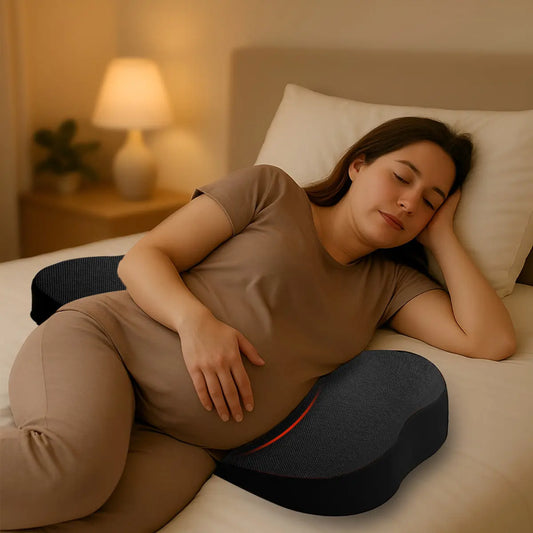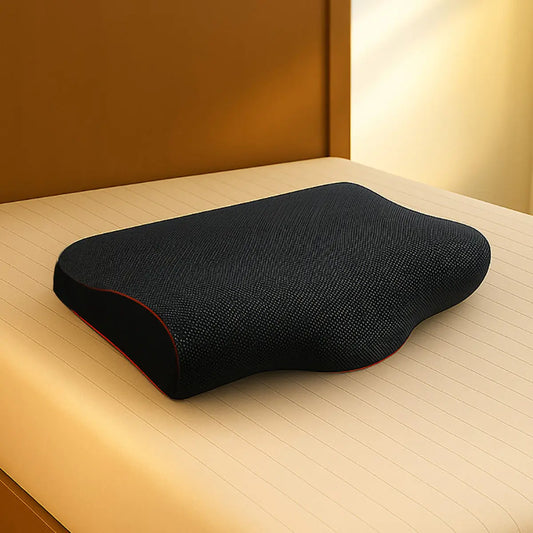
No More Gym Back Pain: Fix Your Form!
Share
From Gym Gains to Back Pains: The Wrong Way to Work Out
🏋️♂️ When Fitness Backfires
You hit the gym to get stronger, fitter, and healthier. But what happens when your workout leaves you with an aching back instead? Many gym-goers unknowingly damage their spine due to poor form, overtraining, or skipping essential recovery steps. Back pain is one of the most common injuries among fitness enthusiasts, yet it is entirely preventable. Understanding what causes this discomfort and how to mitigate it can help you train smarter and pain-free.

🚨 Common Gym Mistakes That Lead to Back Pain
🔴 Poor Form During Lifts
- Incorrect deadlifts, squats, and overhead presses put unnecessary strain on your lower back. Many people round their spine while lifting, which increases pressure on the lumbar discs. Over time, this can lead to herniated discs, nerve compression, and chronic pain.
- Always maintain a neutral spine, engage your core, and ensure that your hips, knees, and shoulders are aligned correctly when performing these exercises. If unsure, work with a certified trainer to master proper technique.

🔴 Lifting Too Heavy Too Soon
- Ego lifting? Bad idea! Overloading your muscles before they’re ready forces your spine to compensate, leading to injuries like muscle strains or slipped discs. Many lifters feel pressured to lift heavier weights to match others in the gym, but this often comes at the expense of proper execution.
- Start with moderate weights and focus on controlled movements. The goal is to perfect form first before progressively increasing weight. Strength training is a marathon, not a sprint.

🔴 Skipping Core Workouts
- A weak core = more pressure on your lower back. Your core is the foundation of every movement, providing stability and balance. If your core is weak, your spine bears the brunt of your lifting efforts, increasing the risk of injuries.
- Incorporate planks, bird-dogs, and leg raises to build core strength. Even functional exercises like farmer’s carries and stability ball workouts help strengthen deep core muscles that support the spine.

🔴 Lack of Mobility & Stretching
- Tight hamstrings and hip flexors pull on your lower back, increasing stress. Limited mobility also prevents you from achieving full range of motion, leading to improper lifting mechanics. Your muscles need elasticity to function optimally.
- Always stretch before and after workouts to maintain flexibility. Dynamic warm-ups, such as leg swings and hip openers, prepare your body for movement, while static stretching post-workout reduces stiffness. Using a foam roller can further release muscle knots and improve blood circulation.

💡 How to Protect Your Back & Avoid Injuries
✅ Use Proper Equipment
- A weightlifting belt provides lower back support during heavy lifts by increasing intra-abdominal pressure, stabilizing the spine. However, it should not be a crutch—your core should still do most of the work.
- Ensure your gym shoes offer proper arch support to maintain spinal alignment during lifts. Avoid old, worn-out shoes, as they can lead to instability and improper weight distribution.

✅ Engage in Active Recovery
- Foam rolling and massage therapy release tight muscles and improve circulation. Many athletes underestimate the power of recovery, but taking time to relax your muscles prevents chronic pain and stiffness.
- Yoga and mobility drills enhance spinal flexibility, reduce tension, and prevent injuries. Incorporating mobility exercises into your weekly routine can make a huge difference in overall movement quality.

✅ Use the Right Support When Resting
- Sitting on hard benches after workouts? That’s a recipe for back stiffness. Many gym-goers finish their session and immediately slump onto uncomfortable surfaces, unknowingly increasing spinal stress.
- The Trajectory Office Seat Pillow provides ergonomic support to relieve pressure post-workout. Whether sitting at work or unwinding after training, proper lumbar support ensures a pain-free recovery.
🔥 Conclusion: Train Smart, Stay Pain-Free
Fitness should enhance your health, not break your back. Many injuries stem from preventable mistakes, such as poor form, lack of warm-ups, or overtraining. By prioritizing proper technique, listening to your body, and supporting your recovery, you can stay injury-free and maximize gym performance.Consistency is key, but so is smart training. Take care of your back, and it will take care of you.





